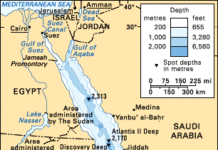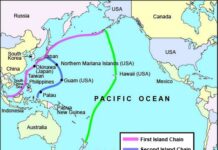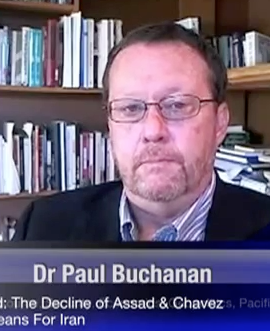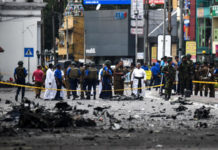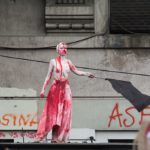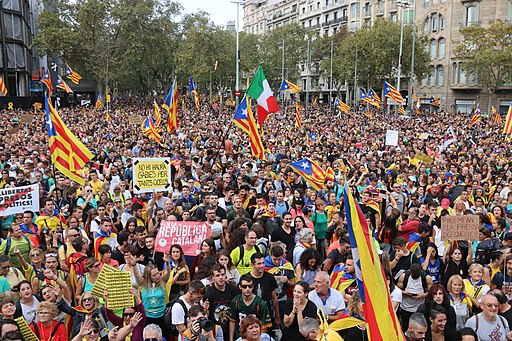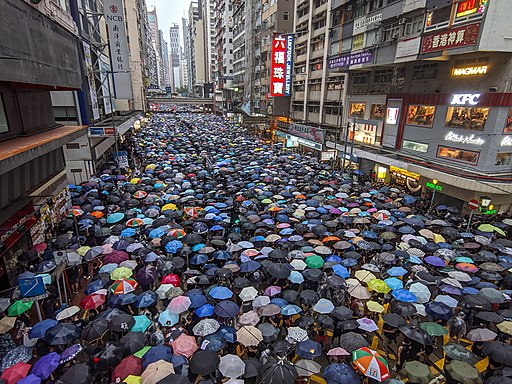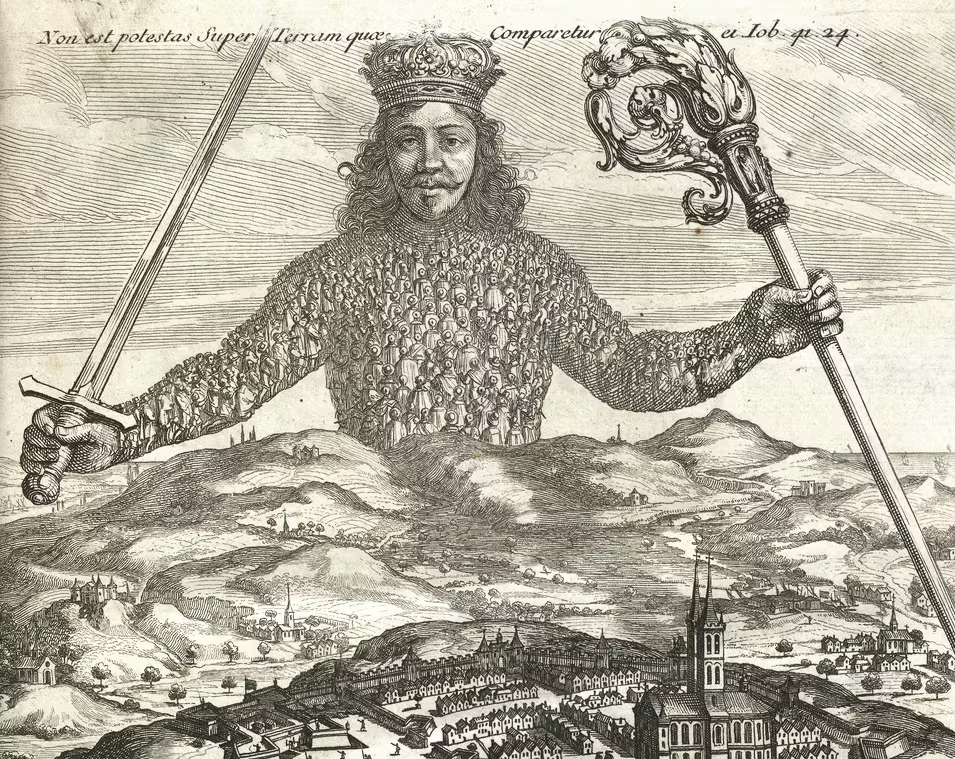It seems fair to say that we currently live in a problematic political moment in world history. Democracies are in decline and dictatorships are on the rise. Primordial, sectarian and post-modern divisions have re-emerged, are on the rise or have been accentuated by political evolutions of the moment such as the growth of nationalist-populist movements and the emergence of demagogic leaders uninterested in the constraints of law or civility. Wars continue and are threatened, insurgencies and irredentism remain, crime proliferates in both the physical world and cyberspace and natural disasters and other climatic catastrophes have become more severe and more frequent.
One of the interesting aspects to this “world in turmoil” scenario is the global surge in social protests. Be it peaceful sit-ins, land occupations, silent vigils, government building sieges, street and road blockades, pot-banging and laser-pointing mass demonstrations or riots and collective violence, the moment is rife with protest.
There are some significant differences in the nature of the protests. Contrary to previous eras in which they tended to be ideologically uniform or of certain type (say, student and worker anti-capitalist demonstrations), the current protest movement is heterogeneous in orientation, not just in the tactics used but in the motivations underpinning them. In this essay I shall try to offer a taxonomy of protest according to the nature of their demands.
Much of what is facilitating the current protest wave is global telecommunications technologies. In previous decades people may have read about, heard about or seen protests at home or in far-off places, but unless they were directly involved their impressions came through the filter of state and corporate media and were not communicated with the immediacy of real-time coverage in most instances. Those doing the protests were not appealing to global audiences and usually did not have the means to do so in any event. Coverage of mass collective action was by and large “top down” in nature: it was covered “from above” by journalists who worked for status quo (often state controlled) media outlets at home or parachuted in from abroad with little knowledge of or access to the local, non-elite collective mindset behind the protests.
Today the rise of individual telecommunications technologies such as hand-held devices, social media platforms and constant on-line live streaming, set against a corporate media backdrop of 24/7 news coverage, allows for the direct and immediate transmission of participant perspectives in real time. The coverage is no longer one sided and top down but multi-sided and “bottom up,” something that not only provides counter-narratives to offical discourse but in fact offers a mosaic landscape of perspective and opinion on any given event. When it comes to mass collective action, the perspectives offered are myriad.
The rise of personalised communication also allows for better and immediate domestic and transnational linkages between activists as well as provide learning exercises for protestors on opposite sides of the globe. Protestors can see what tactics work and what does not work in specific situations and contexts elsewhere. Whereas security forces have crowd control and riot training to rely on (often provided by foreign security partners), heretofore it was difficult for protest groups to learn from the experiences of others far away, especially in real time. Now that is not the case, and lessons can be learned from any part of the world.
Demonstrations in Barcelona (Catalonia), October 2019.
The literature on mass collective action often centres on what are known as “grievance versus greed” demands. One side of the continuum involves pure grievance demands, that is, demands for redress born of structural, societal or institutional inequalities. On the other side are demands born of the desire to preserve a self identified right, entitlement or privilege. In spite of the connotations associated with this specific choice of words, greed demands are not necessarily selfish nor are grievance based protests always virtuous. For example, greed demands can involve respect for or return to basic civil liberties as universal human rights or demands for the preservation of democracy, such as in the case of Hong Kong. Conversely, grievances can often be selfish in nature. Thus, although the pro-Brexit demonstrations are construed as demands that politicians heed the will of the people, the underlying motivation is defensive and protective of a peculiarly defined form of nationalism. A particularity of the modern era is that although most of the protests are portrayed as grievance-based, a considerable amount are in fact greed-based and not always virtuous, as in the case of the Charlottesville white supremacy marches and anti-immigrant demonstrations in Europe.
Protests against economic policies and conditions have recently been seen in Chile, France, Ecuador and Iraq. Protests against centralised government control have been seen in Catalonia, Indian Kashmir and Hong Kong. Protests against authoritarianism, elitism and corruption have been seen in Lebanon, Russia, Venezuela, Bolivia, Haiti, Iran, Pakistan and Nicaragua. Protests against elitism are seen in the UK (over Brexit), and against state repression in Greece. “Othering” protests have occurred in the US, Italy, Hungary, Greece and South Africa, among other places. Interestingly, the majority of contemporary protests are not strictly economic (structural) in nature, but instead concentrate on superstructural factors such as the behaviour of government, restrictions on voice and representation and/or the vainglorious impunity of socioeconomic elites.
Often, such as in Chile, the protests begin as one thing and morph into another (starting out as protests against economic policy and conditions and then adding in protests against heavy handed state repression). The more new actors join the original protestors, the more likely the protests themselves will adopt a heterogenous or hybrid nature. That also extends to the tactics employed: while some protesters will choose passive resistance and civil disobedience as the preferred course of direct action, others will choose more confrontational tactics. The precise mix of this militant-moderate balance is determined by the prior history of protest and State repression in a given society (see below). The idea is to clear space for a peaceful resolution to the dispute with authorities, something that may require the use of confrontation tactics in order for authorities to accede to moderate demands. Remember: in spite of the language used, the protests in question are not part of or precursors to revolutionary movements, properly defined. They are, in fact, reformist movements seeking to improve upon but not destroy the status quo ante.
In recent times the emergence of leaderless resistance has made more difficult the adoption of a coherent approach to direct action in which moderate and militant tactics are used as part of a unified strategy (or praxis) when confronting political authorities. This is an agent-principal problem before it is a tactical problem because there is no core negotiating cadre for the protest movement that can coordinate the mix of moderate and militant actions and speak to the authorities with a unified voice and grassroots support. Under such conditions it is often difficult to achieve compromises on contentious issues, thereby extending the period of crisis which, if left unresolved by peaceful means, can lead to either a pre-revolutionary moment or a turn towards hard authoritarianism. That again depends on the society, issues and history in question.
Introduction of new actors into mass protest movements inevitably brings with it the arrival of criminals, provocateurs, third columnists and lumpenproletarians. These seek to use the moment of protest as a window of opportunity for the self-entered goals and use the protest movement as a cloak on their actions. These are most often the perpetrators of the worst violence against people and property and are those who get the most mainstream media coverage for doing so. But they should not be confused with the demographic “core” of the movement, which is not reducible to thugs and miscreants and which has something other than narrowly focused personal self-interest or morbid entertainment as a motivating factor.
The type of violence involved in mass collection action tells a story. Attacks on symbols of authority such as monuments and statues, government buildings or corporate entities general point to the direction of discontent. These can range from graffiti to firebombing, depending on the depth of resentment involved. Ransacking of supermarkets is also a sign of the underlying conditions behind the disorder. Destruction of public transportation does so as well. Attacks on security forces in the streets are a symbol of resistance and often used as a counter-punch to what is perceived as heavy handed police and/or military responses to peaceful protest. In some societies (say, South Korea and Nicaragua) the ability to counter-punch has been honed over years of direct action experience and gives pause to security forces when confronting broad-based social protests.
On the other hand, assaults on civilians uninvolved in security or policy-making, attacks on schools or otherwise neutral entities such as sports clubs, churches or community organisations point to either deep social (often ethno-religious) divisions or the presence of untoward elements hiding within the larger movement. Both protest organisers and authorities need to be cognisant of these differences.
In all cases mass protests are ignited by a spark, or in the academic vernacular, a precipitating event or factor. In Bolivia it was president Morals’s re-election under apparently fraudulent conditions. In Chile it was a subway fare hike. In France it was the rise in fuel prices that sparked the Yellow Vest movement that in turn became a protest about the erosion of public pension programs and and worker’s collective rights. In Ecuador it was also a rise in the price of petrol that set things off. In Hong Kong it was an extradition bill.
One relatively understudied aspect of contemporary protests is the broader cultural milieu in which they occur. All societies have distinctive cultures of protest. In some instance, such as Hong Kong, they are not deeply grounded in direct action or collective mass violence, and therefore are slow to challenge the repressive powers of the State (in the six months of Hong Kong protests three people have been killed). In other countries, such as Chile, there is a rich culture of protest to which contemporary activists and organisers can hark back to. Here the ramping up of direct action on the streets comes more quickly and involves the meting out of non-State violence on property and members of the repressive apparatuses (in Chile 30 people have died and thousands injured in one month of protests). In other countries like Iraq, pre-modern sectarian divisions combine with differences over governance to send protests from peaceful to homicidal in an instant (in Iraq over 250 people were killed and 5,000 injured in one week of protest).
Just like their are different war-fighting styles and cultures, so too are their different protest cultures specific to the societies involved.
Hong Kong protests, August 2019. Source: Studio Incendo.
The differences in protest culture, in turn, are directly related to cultures of repression historically demonstrated by the State. In places like Hong Kong there has been little in the way of a repressive culture prior to the last decade or so, and therefore the Police response has been cautious and incremental when it comes to street violence (always with an eye towards what the PRC overlords as well as Hong Kong public will consider acceptable). In Chile the legacy of the dictatorship hangs like a dark shadow over the security forces, who themselves have enjoyed a considerable degree of autonomy from civilian oversight in the years since the transition to democracy (in what can be considered, along with the market-driven macroeconomic policies that favour the dictatorship’s economic supporters, another authoritarian legacy). In places like Egypt the repressive response is predicated on belief in the utility value of disproportionate force: any demonstration, no matter how peaceful, is met with degrees of (often extra-judicial) lethality so as to serve as a lesson and set an example for others.
The way in which state security organisations respond to protests is also a function of the degree of security sector coherence. Issues such as inter-service rivalries, factional disputes within the armed services, different perspectives on civil-military relations and standards of professional autonomy all factor into if and how those charged with the management of organised violence will respond to differentiations types of protest.
It is therefore in the dialectic between social protest and State repressive cultures where the physical-kinetic boundaries of collective mass action are drawn. Some societies are restrained or “polite” and so too are their notions of proper protest. In others, the moment for restraint ends when protests begin.
Underlying different approaches to contemporary protests is the issue of consent and toleration, or more precisely, the threshold of of consent and toleration. Basically popular consent is required for democratic governance to endure and prosper. Consent is given contingently, in the expectation that certain material, social and political thresholds will be met and upheld by those who rule. When the latter fail to meet or uphold their end of the bargain, then consent is withdrawn and social instability begins. Although it is possible for consent to be manipulated by elites, this is a temporary solution to a long-term dilemma, which is how to keep a majority of the subjects content with their lots in life over time?
Contingent mass consent also depends on a threshold of toleration. What will people tolerate in exchange for their consent? The best example is the exchange of political for economic benefits in dictatorships: people give up political rights in order to secure material benefits. But the threshold of toleration is often fragile and unstable, especially when grievances have been festering for a time or demands have repeatedly gone unmet. When that is the case the spark that precipitates the withdrawal of mass contingent consent can be relatively minor (say, defeat by a national football team in a World Cup or the assassination of an innocent by the security forces).
Each society develops its own threshold of contingent consent and toleration. What people will tolerate in Turkey is not the same as what people will tolerate in New Zealand (assuming for the purposes of this argument that Turkey is still a democracy of sorts). In fact, the very basis of consent differ from society to society: what Turks may consider acceptable in terms of material, social and political conditions may not be remotely acceptable to the French. Even outright authoritarians need to be conscious of the threshold of consent and toleration, if not from the masses then certainly from the elites that support them. But that only adds to their governance dilemmas, since pursuit of elite contingent consent can bring with it an intolerable situation for the masses. At that point the cultures of protest and State repression will come into play.
Ultimately, the current age of protest is the product of a global crisis of governance. Belief in the combination of market capitalism and democratic forms of representation as the preferred political-economic combination has eroded significantly. Rapid demographic and technological changes, increased income inequalities and other pathologies associated with the globalisation of production and exchange have undermined the notion that a rising tide lifts all boats under liberal democratic conditions. Authoritarians have increasingly filled the void both in countries that have democratic traditions as well as those that do not. Using the power of the State, they propagate fear-mongering and scapegoating between in- and out-groups in order to consolidate power and stifle opposing views.
The irony is that the turn to authoritarianism may be seen as the solution to the crisis of democratic governance, but it is no panacea for the underlying conditions that produced the current wave of protest and in fact may exacerbate them over the long term if protest demands are repressed rather than addressed. If that is the case, then what is currently is a global move towards reformism “from below” could well become the revolutionary catharsis than recent generations of counter-hegemonic activists failed to deliver.
That alone should be reason enough for contemporary political leaders to study the reasons for and modalities of the current wave of protests. That should be done in an effort not to counter the protests but to reach compromises that, if not satisfying the full spectrum of popular demands, serve as the foundation for an ongoing dialogue that reconstructs the bases of consent and toleration so essential for maintenance of a peaceful social order. It remains to be seen how many will do so.
36 Parallel Assessments provides tailored analyses of political, economic and social conditions in a range of countries, including risk assessments, market intelligence and futures forecasts. Ask what we can do for you by writing the director at paul@36th-parallel.com



